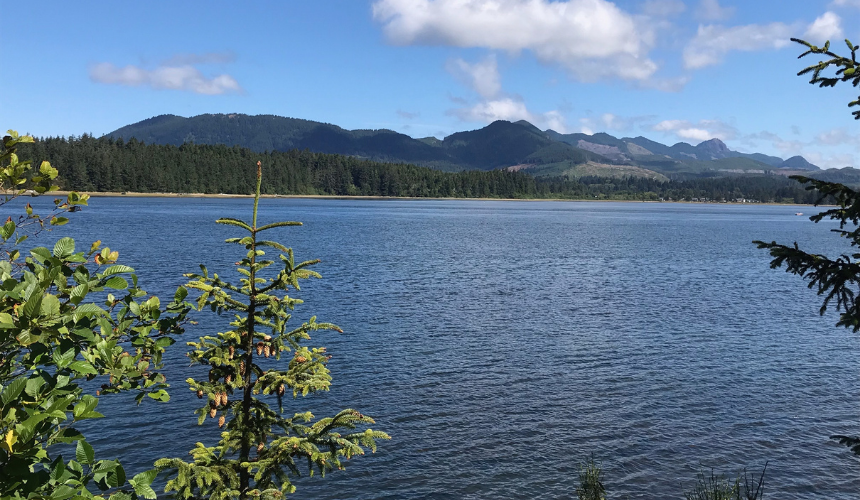
Fishers Point Habitat Reserve Site Steward Bill Hutmacher captured this view of the proposed Rainforest Reserve from NCLC’s 42-acre property near Wheeler during a recent site visit.
Fishers Point Habitat Reserve is a unique property near Wheeler that was conserved by North Coast Land Conservancy in 2003. Located in the marine zone of the Nehalem Estuary, it includes nearly one mile of shoreline habitat along Nehalem Bay and ensures a “green vista” for visitors to the park.
It also contains a portion of track used by the Oregon Coast Scenic Railroad, particularly during the summer months. The heritage railroad, founded in 2003, operates scenic train rides between Garibaldi and Rockaway Beach.
As a result, volunteer Site Steward Bill Hutmacher sees all kinds of sights when he visits the reserve every couple of months.
Bill became the Site Steward for Fishers Point in 2014. A resident of Newport, he was looking for a site stewarding opportunity that was a little closer to home, and Fishers Point was available.
“I like getting out into nature and enjoying everything it has to provide,” Bill says, adding Fishers Point is “a nice little oasis in that area.”
Every so often he sees the train going through, or people doing track maintenance for the railroad. Occasionally he’ll come across other pedestrians on the property who are unaware that it’s a habitat reserve—accessible to the public via kayak or canoe.
He takes those opportunities to share about the conservation of the property and the work NCLC is doing.
With a salt marsh, estuarine resources and a Sitka spruce forest, Fishers Point is also home to a wide array of wildlife. That includes Canada geese, osprey, great blue herons, egrets and other bird and mammal species that lead to “fun wildlife interactions,” Bill says.
He recalls one time when he was pulling Scotch broom, an invasive plant species, during a site visit. He had left his knapsack with his phone near the railroad. When he returned, a porcupine was sitting atop it.
“It was just the worst timing, to not have your phone to take a picture,” Bill says.
In addition to removing weeds and interacting with the people he sees, Bill’s main role is “to keep an eye out” on the property and look for new invasive species, human impact or other issues, and then report the information back to NCLC’s stewardship team.
With some 60 habitat reserves spread over Clatsop, Tillamook and Lincoln counties, NCLC has come to depend on its Site Stewardship Program and volunteers like Bill.
As for him, “I just like being part of the effort to support what the conservancy is doing.”

Comments